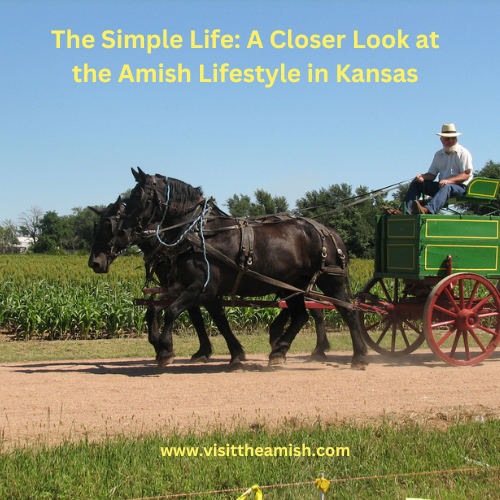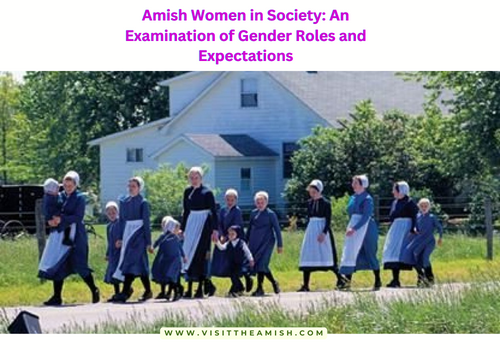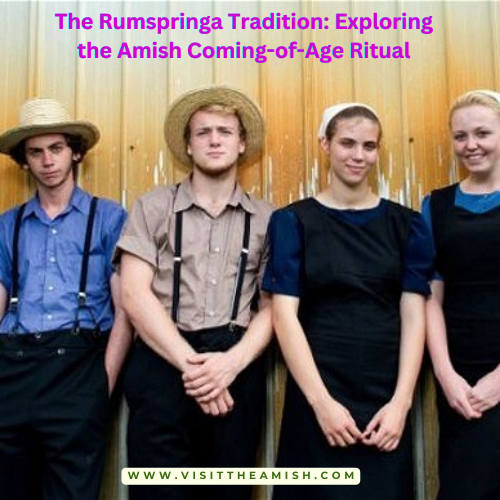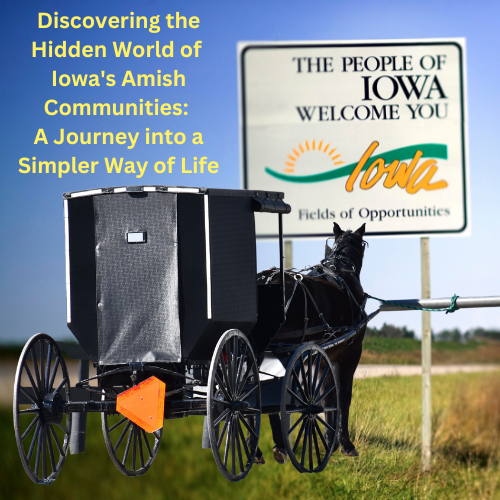
Amish Business Practices – The Secrets to the Success of Amish Entrepreneurs
The Amish community is known for their simple and traditional way of life, which includes a focus on self-sufficiency and a rejection of modern technology. However, despite their traditional approach, Amish entrepreneurs have achieved remarkable success in the business world. Many Amish-run businesses have flourished for generations, and their products are highly sought after for their quality and craftsmanship. In this article, we will explore the secrets to the success of Amish entrepreneurs and the unique business practices that have helped them thrive in today’s competitive marketplace.
Amish entrepreneurs run thousands of companies across North America. They range from one-person workshops to large manufacturers.
The success of Amish businesses is rooted in the community’s values and the enduring strength of their entrepreneurial tradition. They follow a number of simple principles that can help your business thrive.
1. Focus on Relationships
Amish Business Practices
The Amish have a long history of entrepreneurship, and despite not using public utilities, owning motor vehicles or working in offices with computers they’re remarkably successful. A study by a sociologist found that only 44 percent of newly opened Amish businesses fail within four years. The national small business default rate is higher at over 50 percent.
One Amish entrepreneur is Harley Riehl, who launched Country Style Deli in his hometown of Kutztown, Pennsylvania, just as the Great Recession hit. He built his business from the ground up and has since grown it into a profitable operation, employing nine members of his community.
But a key to his success is his focus on relationships. He doesn’t just sell his products to the world; he takes care of his customers and tries to understand their needs.
For example, he will make special accommodations for those who don’t have a lot of cash, such as adjusting his asking price to fit their budget. He also makes sure his employees are paid well.
As a result, he’s able to build a loyal customer base and keep the doors open when his economic situation dries up.

Another key to his success is that he plays to his strengths, knowing handmade, traditional and rustic products are always in demand. In addition, he focuses on the welfare of others and demonstrates personal integrity in his dealings with them.
Unlike many other types of businesses, Amish entrepreneurs take a relationship-based approach to their business practices. This includes building strong relationships with their customers and staff, focusing on the big picture, playing to their strengths, and creating an effective marketing story.
2. Prosper by Playing to Your Strengths
Prospering by playing to your strengths is one of the smarter decisions you’ll make as a business owner. Using your strengths to the best of your abilities makes a huge difference in your success and happiness levels and can also improve the quality of your work. This is especially true for small businesses. The benefits of using your strengths are many and varied, including better work/life balance, enhanced productivity and greater overall satisfaction with work and life in general. The best part is that you’ll find that your strengths will actually be your most cherished assets. The best way to tap your strengths is to be clear about what they are, and make them the focal point of every decision you make as a business owner.
3. Get to Market First
The success of Amish entrepreneurs largely depends on getting to market first. This is why so many Amish businesses are small and home-based, because they know that if they can get their products in front of their audience, then they can make sales.
Whether they’re producing hand-crafted, artisan-made goods or offering services like consulting and advising, these small companies are the backbone of Amish economies. They often are run out of the home, allowing them to keep overhead low and their owners personally involved in the company.
This strategy works particularly well for Amish women, who often start their own businesses to supplement their husbands’ income or help them stay busy while their children are young. It also gives them the flexibility to work for other Amish businesspeople as needed, Kraybill notes.
A key aspect of Amish culture that contributes to this is the emphasis they place on social ties and personal interaction. For example, one woman in a conservative Swiss Amish settlement has started several businesses that provide services to fellow Amish members rather than to a wider clientele.
These businesses are not advertised and, even the most thriving ones, may be invisible to non-Amish neighbors. They are reliant on local connections, and any commercial interactions are face-to-face.
Kraybill points to the Bank of Bird-in-Hand in Lancaster County as a great example of an Amish bank that has managed to stay out of foreclosure since it opened in 2013. Alan Dakey, president of the bank, said that the frugality and money management skills of his clients have helped them stay out of debt and avoid loan defaults.
Another key factor in the success of Amish businesses is their focus on quality products. These products are typically crafted with care and attention to detail, which makes them stand out from the rest. This is why it’s important to be sure that your product is high-quality and has something truly unique to offer.
4. Recycle Resources
Amish business owners often keep their companies small, allowing them to focus on relationships with customers, suppliers, and distributors. This conservative, slow-paced approach to decision-making and growth reduces the risk of starting a business while also preserving valuable time for family members.
The Amish also have a strong work ethic, and they aren’t afraid to sweat the small stuff when it comes to running their businesses. This is because they are so focused on their core values of faith, community, and simplicity.

Having a strong work ethic is essential to their success as entrepreneurs, and this also means that they are able to find ways to reuse resources in order to save money. This includes recycling aluminum cans and cardboard boxes to make new products, as well as finding ways to repurpose old furniture into a whole new design.
This recycling strategy helps to reduce the amount of waste that’s going into landfills, and it can also help reduce the amount of energy required to process recycled materials. In addition, it can provide a sense of pride for the company’s employees.
It also can be a good way to keep your company environmentally friendly and help you build trust with your customers. It’s also a good way to keep your employees informed and educated about environmental issues that impact their daily work.
While the Amish lifestyle has a lot of advantages, it isn’t without its drawbacks. One of the biggest issues is that their land is becoming more and more expensive, making it harder for them to stay in the farming business.
In order to combat this issue, some Amish communities have started loan programs for young adults who want to start their own businesses. These low-interest loans funnel funds back into the community and allow more people to get involved in business.
5. Network
Networking is the process of forming and maintaining relationships with people. It is an essential component of business success and can be a great way to learn about industry trends, improve your product or get feedback from others.
Amish entrepreneurs often seek advice from each other in a peer-to-peer setting. They share information about their challenges, experiences and goals, which allows them to form trust and build long-term relationships.
Entrepreneurs can also benefit from hearing about opportunities that may not have been available to them otherwise. This is especially true when it comes to finding investment capital, delivering goods and getting employees to work on time.
Many Amish communities have left farming behind and pursued alternative businesses, such as building, manufacturing or selling product across the country or internationally. In a recent study, researchers found that the Amish have an unusually high success rate for small businesses, with five-year failure rates at less than 10%.
One Amish entrepreneur, Rick Schlabach, got his start in the construction business by noticing a need and filling it with his own product. He started by sandblasting and painting steel parts that he was able to make for a fraction of the price of pre-painted steel.
He built a business around that need, selling his products at local farmer’s markets and using his expertise to help other Amish entrepreneurs build their businesses. Today, he has a thriving production line for Riverside RV in LaGrange County, Georgia.
This is just one example of the countless ways in which networking can benefit an entrepreneur. It’s a great way to stay on top of industry trends and expand your customer base. It also allows you to meet your competition, so you can understand the gaps that they might be filling in your market and find ways to compete with them.
Here is a great book if you want to look deeper into why the Amish succeed at business:













